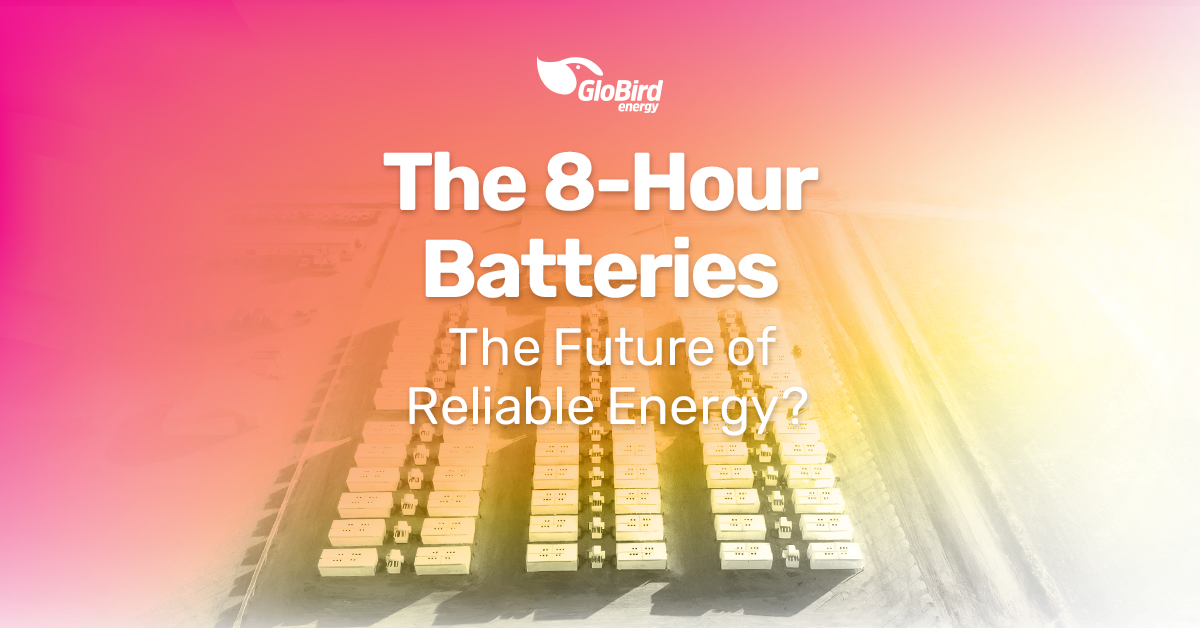What will we do when the sun doesn’t shine as much as usual and the wind doesn’t blow enough – the unpredictable periods of renewable drought called dunkelflaute (a German term meaning “dark doldrums”)?
That’s long been one of the major challenges facing the global energy sector as it works to transition toward a future mix built on energy from renewable sources.
At the same time, simply having enough dispatchable energy to replace what we have been getting from coal-fired plants for many years is a high priority, as those traditional non-renewable sources continue to go into “retirement” over the next decade.
One part of the solution is only weeks from becoming operational: Australia’s first eight-hour Battery Energy Storage System (BESS), near Balranald, in New South Wales.
What is the Limondale eight-hour battery?
About four years ago, a large-scale photovoltaic plant began operating in the Riverina region of southern NSW, about 450km north of Melbourne.
It has about 872,000 solar panels on 770 hectares, and an installed capacity of 314 MWac. One of Australia’s largest solar farms, it generates enough electricity to power about 105,000 homes per year.
About 12 months ago, the owner of the Limondale Solar Farm, RWE, started construction on the next landmark project, adding Australia’s first eight-hour battery.
With a planned capacity of 50+ megawatts (MW) and 400+ megawatt hours (MWh) and connecting to the existing 33kV transmission line, the BESS will be made up of 144 Tesla Megapack lithium-ion batteries.
Is this what we mean by “long-duration storage”?
The Limondale BESS is designed to store excess renewable energy during the day and dispatch it in the evenings and mornings when demand is high.
Last year, the average duration for grid-scale batteries commissioned in Australia was 2.7 hours. The Limondale project achieves more hours with additional battery cells and a control system optimised for the task.
Long-duration energy storage generally refers to technology that can dispatch eight or more hours’ worth of electricity, although Australia’s energy market operator more specifically divides long-duration into shallow storage up to four hours, medium storage of four to 12 hours, and deep storage allowing for 12 hours and longer.
Long-duration storage isn’t all for the same purpose
The energy industry is looking closely at how different technologies can best be combined to complement each other and come together to cover a range of needs and situations.
The longer-duration battery-storage facilities are squarely aimed at filling the gap that retiring coal generation is leaving.
In summary, shallow-duration storage helps to manage daily fluctuations and frequency stability, while four- to 12-hour systems bank surplus wind and solar for use during morning and evening peaks.
Deep storage (beyond 12 hours) is more like an insurance policy, a strategic reserve for managing rare but unpredictable periods when cloudy and still weather conditions persist over several days.
Eight-hour batteries, in particular, are a competitive alternative to pumped hydro. That’s because pumped hydro, which stores energy by pumping water uphill, is long and complex to construct and only possible in specific locations.
Various industry insiders suggest that the strategic deployment of medium- to long-duration storage will not only lower the total cost of grid infrastructure that needs to be built to support a greater reliance on renewable sources but also help the overall transition move faster.
Why we need to get the technology right
While there’s great confidence and positivity around the new Limondale eight-hour BESS coming online before the end of this year, there’s a salutary lesson from California that many are taking notice of.
The massive Ivanpah Solar Power Facility in California’s Mojave Desert, which began construction in 2010 and was completed in 2014, is set to close next year after what has been a completely unsuccessful tenure.
The solar power plant, which features three 140-metre towers and thousands of computer-controlled mirrors known as heliostats, cost $US2.2 billion to build (the US to AUD exchange rate was much closer to 1:1 during that period).
However, it never lived up to its promised output, producing less electricity than expected while relying on natural gas to stay operational.
The technology used at Ivanpah was cutting-edge for a short period, but couldn’t compete with less expensive forms of solar power generation. It has long been made obsolete by the photovoltaic technology now common all over the world, hence the decision to close the facility down.
You might be able to play your part in the transition
While large-scale and long-duration battery storage is still being developed, home battery storage has already been accepted as an effective smaller-scale input into the energy mix.
We’ve certainly come to understand that the abundant solar-generated energy available in the middle of the day makes a positive contribution to the system, however, storing that in the short term in order to use it at times of high demand is an even more valuable proposition.
That’s where home battery storage comes to the fore, and it’s why GloBird Energy introduced the ZEROHERO energy plan.
ZEROHERO is designed to reward customers with rooftop solar arrays and battery storage who can provide energy to the grid when it’s most needed.
If you can use more power during the day and less during the evening peak, that frees up your excess to go into the grid at that time of greater demand.
The ZEROHERO energy plan is designed to give those who can follow that usage and feed-in pattern the best return on investment of their home battery with the least fuss.
If you don’t draw any energy from the grid, that ZERO usage during the peak will earn you $1 a day. And if you can go further and sell excess energy at that evening peak, you get a bonus feed-in rate too.
Please visit the ZEROHERO information page on the GloBird Energy website for full details, to check whether you meet the eligibility criteria and to sign up.
